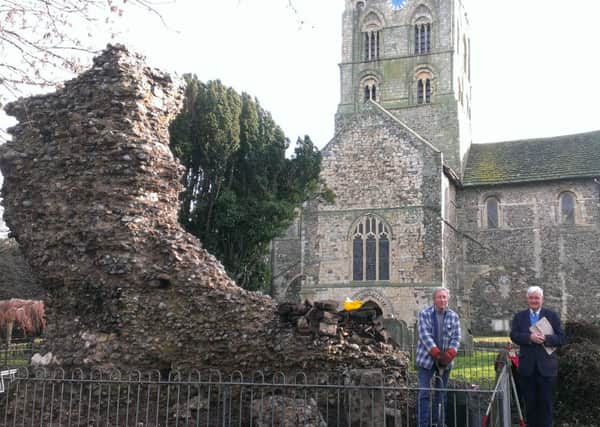Ancient ruin restored


The ruined nave of St Mary de Haura Church, in Shoreham town centre, has been rescued from the vegetation that threatened to bring it down.
Churchwarden Ian Tompkin explained there were concerns about the ivy growing all over the scheduled ancient monument.
Advertisement
Hide AdAdvertisement
Hide Ad“We were very concerned with the weight of the ivy and, with heavy winds, it could have brought the fabric down,” he said.
“It was also nice to open it up to view again.”
The ruin is part of the original west wall, dating back to circa 1103.
Mr Tompkin explained the parish had to fund the restorations in full, because the ruin was attached to the church and could not, therefore, be funded by English Heritage.
He estimated the cost of the first phase was around £3,000 and once the work on the masonry is complete, that total will be around £5,000.
Advertisement
Hide AdAdvertisement
Hide AdContractor Dave Stringer, a landscaper for 40 years, has been working on the project since November.
He has a long history with the church, having had the job of winding the well-known church clock years ago.
Mr Tompkin said: “He has very successfully and carefully removed all the ivy and vegetation.”
It was painstaking work, as a lot of the stonework is quite fragile.
Advertisement
Hide AdAdvertisement
Hide AdMr Stringer said: “If we don’t do it properly, it will just be back to the state it was in before.
“I have still got to dig out a channel all around the other side of the fence, to get out all the roots.”
He said he regularly saw between 30 and 50 people a day, asking about the work, and they were all very positive about it.
A display board installed in May 2010 explains the history of the nave but since then, the plants have grown all around.
Advertisement
Hide AdAdvertisement
Hide AdMr Tompkin said: “People could not see the ruin because it was covered up. The vegetation was 4m high, so you couldn’t see the monument at all.”
The ruin was fenced off after the war and the area was excavated in 1915, and again in 1950.
“It belongs to the town and it is part of the town, and if people would like to give donations, they would be gratefully received,” said Mr Tompkin.
When the nave collapsed in the late 1600s, all the stonework went back into the church, much it used to create the temporary west wall.